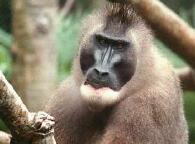|
Some Oceanic Life Forms
|
|
Antarctic Ocean Wildlife : Zoom in on the delicately ribbed plankton filter and compound eyes of krill and a species of amphipod. Also see this Underwater Field Guide describing a whole menagerie of animals and plants, from sponges to jellyfish to diatoms.
Plankton Image Database : Photo gallerys of zooplankton, phytoplankton and microzooplankton.
Oceanlink : Find answers to over 550 questions about marine biology; from seaweed to sharks, whales to whelks, and marine pollution to oceanography. Topics include Northwest Pacific Biodiversity, Tides, Animals, The Deep Sea, Marine Food Webs, Underwater Acoustics, an Intertidal Field Guide, and more.
Diatoms: With their delicate, ornate cell walls made of silicon dioxide, the aquatic protists called diatoms rival the work of the world's best jewelers. Sift through a taxonomic databases and other resources of the California Academy of Sciences, whose glass menagerie includes more than 59,000 samples.
Protozoa: Microbes were the only living things for most of the history of the Earth. Over 3.5 billion years ago they began the process of transforming this planet, making it habitable for those who came later. This site has images of microbes, classification schemes, descriptions of organisms, talks and other educational resources.
|
|
Mammals – That's Us, Too
|
|
Class Mammalia : All mammals share three characteristics not found in other animals: 3 middle ear bones; hair; and the production of milk by modified sweat glands called mammary glands.
The Primates : All of the ~300 or more species of primates are classified into one taxonomic order because they are mammals with close evolutionary roots. The exact number of living primate species may not be known. Every few years new ones are found. In fact, a team of scientists has discovered Three New Species of Mouse Lemurs, the world’s smallest primates, living in the endangered forests of Madagascar.
Primate Brain Information System : For neuroscientists baffled by the many alternative names given to similar central nervous system structures in different species, BrainInfo offers welcome relief. The site sorts out 6500 names and synonyms for about 860 structures and gathers information on them from various databases.
Duck-Billed Platypus Facts : Little is known about the ancestry of the platypus. But fossils have been found that seem to show that the platypus had ancestors which had similar attributes. It is suggested that the platypus developed as a result of therian mammals (metatherians and eutherians) diverging over 180 million years ago.
Digital Recordings from Nature! :
Bird, Insect and other animal sounds. North American and Costa Rican birds. Also Bats, Whales, Squirrels and Rattlesnakes.
Mammals and Birds of Latin America & Caribbean : Lists over 5500 species and includes info on endangered status, distribution maps, and scientific and common names in English, Spanish, and Portuguese.
African Elephant Is Two Species': Researchers say there is genetic evidence to show that Africa's elephants form two separate species. The difference between the two is more than half the genetic distinction between African and Asian elephants.
Panda Clone Could Save Species: Chinese scientists say they have successfully produced an embryo clone of a giant panda, and are hoping that it will now develop to maturity. They are hailing it as a possible breakthrough in their efforts to save one of the world's most endangered species.
Endangered Species Cloned: Some researchers believe cloning may offer the only way to save species from extinction. But conservationists argue there is little point if the reasons for the animals' decline, such as habitat loss, have not been addressed first.
New Help for Threatened Bats: Scientists say almost half the world's bat species face some degree of threat to their survival and that populations in many countries are experiencing alarming declines. Bat Conservation International and Bat Conservation Trust are to organization to check out.
Bats Revealed as Bird Killers: A rare kind of European bat regularly feasts on birds, surprised biologists have discovered. And they suspect that the large bats are capable of hunting down the birds in flight, something no researcher has ever seen.
Cetacea: Bone up on your knowledge of whales, dolphins, and porpoises at Cetacea.org, a collection of backgrounders on all 81 known species of cetaceans. The streamlined accounts deliver the basics on appearance, classification, behavior, food, and habitat.
Primates in Print: Need to find the most recent studies on the social life of the Philippine tarsier, a bug-eyed, spindly-fingered primate dwelling in that country's tropical rainforests? How about Jane Goodall's early papers on nest building in wild chimpanzees? This is a well-stocked bibliography of primate books, papers, reports, abstracts, and dissertations.
Tapir Gallery: Get oriented with species accounts that cover the range, habits, and distinguishing marks of the four living species, which inhabit tropical areas of Asia and Central and South America. The well-stocked pictures section contains snapshots along with artwork and other images.
|
|
Birds of the World
|
|
Class Aves
: Birds are vertebrates with feathers, modified for flight and for active metabolism. Birds are a monophyletic lineage, evolved once from a common ancestor, and related through that common origin.
Bird Skulls An internet resource with good illustrations of more than 800 bird skulls. Be sure to look at the animated images of complete bird skeletons.
The Internet Bird Collection: More than 8000 videos of bird species of the world. They currently have 25% of all living species represented.
A.O.U. Names for North American Birds : The history of American bird names since 1886, show each change by the American Ornithologists' Union of Latin or English names. Includes brief explanations for some of the reasoning behind the Linnaean naming system.
New Bird Species in USA : New Gunnison Sage Grouse identified through genetics. It's vocalization is different, too.
Tiny Gnatcatcher Poses Big Conundrum : A study of DNA from the threatened California gnatcatcher and the abundant Baja (Mexico) gnatcatcher has shown no differences that would place the two birds in different subspecies. Therefore, destroying the California bird's habitat through development will not threaten the species, or any subspecies, as a whole.
Digital Recordings from Nature! :
Bird, Insect and other animal sounds. North American and Costa Rican birds. Also Bats, Whales, Squirrels and Rattlesnakes.
Birds and Mammals of Latin America & Caribbean : Lists over 5500 species and includes info on endangered status, distribution maps, and scientific and common names in English, Spanish, and Portuguese.
|
|
Amphibians – Toad and Frogs
|
|
Class Lissamphibia : Species from the following Orders are available in the Animal Diversity Web: Gymnophiona, Caudata and Anura. See also Savannah River Ecology Lab: Reptiles and Amphibians
|
|
Reptiles – Turtles. Snakes, Etc.
|
|
Class Reptilia : Testudines (turtles), Rhynchocephalia (Australian lizards), Squamata (snakes and lizards), Crocodilia (alligators and crocodiles). See also Savannah River Ecology Lab: Reptiles and Amphibians
Crocodilians: Natural History & Conservation: Illustrated with range maps and photos, the site describes the physical characteristics, favorite haunts, and breeding habits of all 23 species of crocodilians. There's also plenty of information on the basic biology, taxonomy, and conservation status
Phylogeny of Turtles: Turtles are survivors that have endured catastrophes like the demise of the dinosaurs amd the ice ages. Offers information on the anatomy, fossil history, and evolution of these reptiles.
|
|
Sharks and Cartilaginous Fish
|
|
Class Chondrichthyes : (cartilaginous fishes: sharks, rays, chimaeras)
Shark Research Program at the University of Florida Museum of Natural History : In the Image Gallery you'll find a wide variety of shark photographs and the works of several skilled scientific illustrators. Shark attack files, population studies, conservation programs.
|
|
Bony Fishes
|
|
Class Actinopterygii : (bony fish, osteichthyes, ray finned fish, spiny rayed fish)
Cichlid Fishes of Lake Malawi : Naturalists were amazed to find scores of fish species that were closely related yet varied wildly in size, color, and eating habits. Find out more about these wonders of evolution, taxonomic lists of Lake Malawi's roughly 335 cichlids, along with hundreds of photos. For a book on the subject see my page about The Cichlid Fishes by George W. Barlow.
Coelecanth: The Fish Out of Time :
Once thought to have gone extinct with the dinosaurs, the Coelacanth was "discovered" alive and well in 1938. Read all about it - including the latest efforts to protect the creature.
Xiphophorus Fishes:
A freshwater fish genus comprised of 22 species, these fishes live in eastern drainages in Mexico, Guatemala, Belize and Honduras, with most of the described species living in Mexico. The taxa make up 3 groups, the Northern Swordtails, the Southern Swordtails and the Platyfish.
Otolith Research from Nova Scotia : To learn the life histories of their slippery subjects, fisheries scientists pull out the animals' otoliths -- small ear bones with microscopic growth rings. The otoliths' shape and elemental content reveal everything from a fish's species and age to its migratory wanderings.
FISH ON LINE : This guide provides a structure and case study material for a computer-based course in ichthyology for upper undergraduate and graduates students in biology or environmental science. The key aspects of ichthyology are presented in five chapters covering Evolution and classification; Morphology and biodiversity; Reproduction; Physiology; and Fishes as part of ecosystems.
Ichthyology at the Australian Museum : The ornate ghostpipefish must be one of the most unfishlike fish alive, with its tubular body and spiky, pawlike appendages. Catch a glimpse of this and many more unusual fish at the Australian Museum Fish Site. Although it's targeted to experts, others may want to check out the many entries illustrated with beautiful drawings from the original publications.
Ichthyology Web Resources : The site is well stocked with links on fish anatomy, behavior, systematics, distribution, biodiversity, etc., from Fishbase, an online catalog, to a how-to on determining the age of a cod.
|
|
Molluscs
|
|
Phylum Mollusca : Molluscs are an extremely diverse group of organisms. Over 50,000 living species have been named, making Mollusca second only to the Phylum Arthropoda in number of species known.
The Cephalopods : Octopuses, Squid, Cuttlefish, Nautilus. A great website -- fun to use and informative.
|
|
Crustaceans, Arthropods and Insects
|
|
Phylum Arthropoda : Arthropods include an incredibly diverse group of taxa such as insects, crustaceans, spiders, scorpions, and centipedes. There are far more species of arthropods than in all other phyla combined.
Tardigrades : The tardigrade, sometimes called water bear or moss piglet, is a microscopic organism, of arthropod-like appearance, but so physiologically unusual it has a phylum all its own.
Mites and Ticks: Don't look now, but something is creeping through your eyebrows: tiny mites that even a shower won't dislodge. Although the denizens of your eyebrows are benign, other kinds of mites suck the life out crops. The varroa mite, a recent invader from Asia, has devastated beehives across the United States.
Scarab Beetles: Scarabs account for about 10% of the world's 350,000 beetle species. This illustrated guide to 23 New World scarab families and subfamilies offers detailed physical descriptions and information on taxonomy, distribution, ecology, and larval forms. Includes an identification key and glossary.
Radar Entomology :
The technique and science of using radar to study insect movement. Valuable in the study of insect migration, especially in research on insect pests (of which there are many). Radar has also been used to study non-migratory (i.e. foraging) movements.
SE Arizona butterflies :
website contains figures for all the 270 (plus) species recorded for Southern Arizona.
Japanese Ants Color Image Database: Home : Myrmecology, Ant Taxonomics and lots of photos.
Fire Ant Research : Entomologists from 11 southern states are cooperating in a project to introduce the fire ant pathogen, Thelohania solenopsae, into red, black or hybrid fire ant populations.
CyberBeeNet : BeeCalendar, BeeResearch, BeeStats, CyberBeeBook, BeeSearch, CoolBeeLinks
Children's Butterfly Site : A great website by my old birding buddy Paul Opler. See also Butterflies of North America, an online atlas. Photos, county checklists, and details about the feeding habits, migration, and conservation status of nearly 750 Lepidoptera species. State coordinators will help identify specimens. Northern Prairie Wildlife Research Center also has Web atlases of North American moths, dragonflies, and mayflies.
Moths of North America: Among the handy resources are county-by-county range maps, species checklists for the lower 48 states, and distribution data for northern Mexico. Having trouble identifying a specimen? Illustrated accounts profile more than 100 common species and can help you pin down the name of your catch.
Firefly flashes and Nitric Oxide : Want to learn how fireflies work? See a photo of a female Photuris sp. ready to devour a prey male. These femmes fatales use flash signals to lure in males of other species by imitating their females' flash patterns. Those sneaky beasties, flashing for dinner!

 Smithsonian Databases in Entomology : The back rooms of museums are often loaded with treasures known only to staff. Here's your chance to rummage through some of the Smithsonian's insect and other entomology holdings, courtesy of its National Museum of Natural History's department of systematic entomology. The Entomology Illustration Archive contains at present over 200 nice illustrations.
Smithsonian Databases in Entomology : The back rooms of museums are often loaded with treasures known only to staff. Here's your chance to rummage through some of the Smithsonian's insect and other entomology holdings, courtesy of its National Museum of Natural History's department of systematic entomology. The Entomology Illustration Archive contains at present over 200 nice illustrations.
Ecological Database of the World's Insect Pathogens: With an eye to improving biocontrol of pests and sparking research on potential risks, researchers at the University of Illinois compiled this global database of arthropod pathogens. The records, which cover nearly 8500 kinds of pathogens and more than 4100 hosts, allow you to identify which type of bug is known to attack a particular species of arthropod.
World of Copepods: Bibliography with 39,000 references dating back to 1600. Search a list of all known copepod scientific names or the database of 5000 type specimens held by the museum. The Copepods Web Portal lists Italian copepods and reviews some of the groups of copepods that inhabit groundwater.
|
|
Cnidaria: Corals, Sea Anemones and Jellyfish
|
|
Cnidaria Home Page : Jellyfish Junction offerings range from genetic information and research methods, to pretty cnidarian photos and a discussion forum. Users can look up the genes involved in intercellular signal transduction and even tips on storing cnidaria in ethanol for DNA analysis.
Hexacorallians of the World : Contains a trove of information on the distribution and taxonomy of sea anemones, corals, and related gelatinous creatures, collectively known as hexacorals.
The site holds entries for more than 1800 species, and is part of the larger website Biogeoinformatics of Hexacorals.
Florida Pioneers Coral Recovery: Two hundred sea urchins are being released into the Atlantic off the Florida Keys, in an attempt to save coral reefs. Scientists hope the sea creatures will restore the health of coral by feeding on algae that smother the reefs.
|
|
Echinoderms
|
|
Phylum Echinodermata : (sea lilies, sea urchins, sea cucumbers)
Echinoid Home Page : Spiny sea urchins and disk-shaped sand dollars are invertebrates with an intricate skeleton composed of plates. There are ~800 species around the world, with fossils going back 450 million years. Identification keys and 200+ taxonomic pages, many with detailed photos, cover 12 of the 76 echinoid families.
|
|
Bacteria and Earliest Life
|
|
Archaea, Bacteria, Etc. : discusses earliest known life forms.
Natural History of the Archaea : discusses earliest known life forms.
|
|
Annelida: Polychaeta
|
|
Polychaete Identification : British Museum (taxonomy, zoology). Taxonomic key and illustrations
Annelid Resources: Another can of Worms on the Internet includes Phylogeny of the Annelida and Allies.
|
|
Algae
|
|
The World of Algae : is an excellent resource for taxonomy, courses of study, picture galleries, toxic qualities and food values. Learn about kelp forests, fossils and red tides.
|



